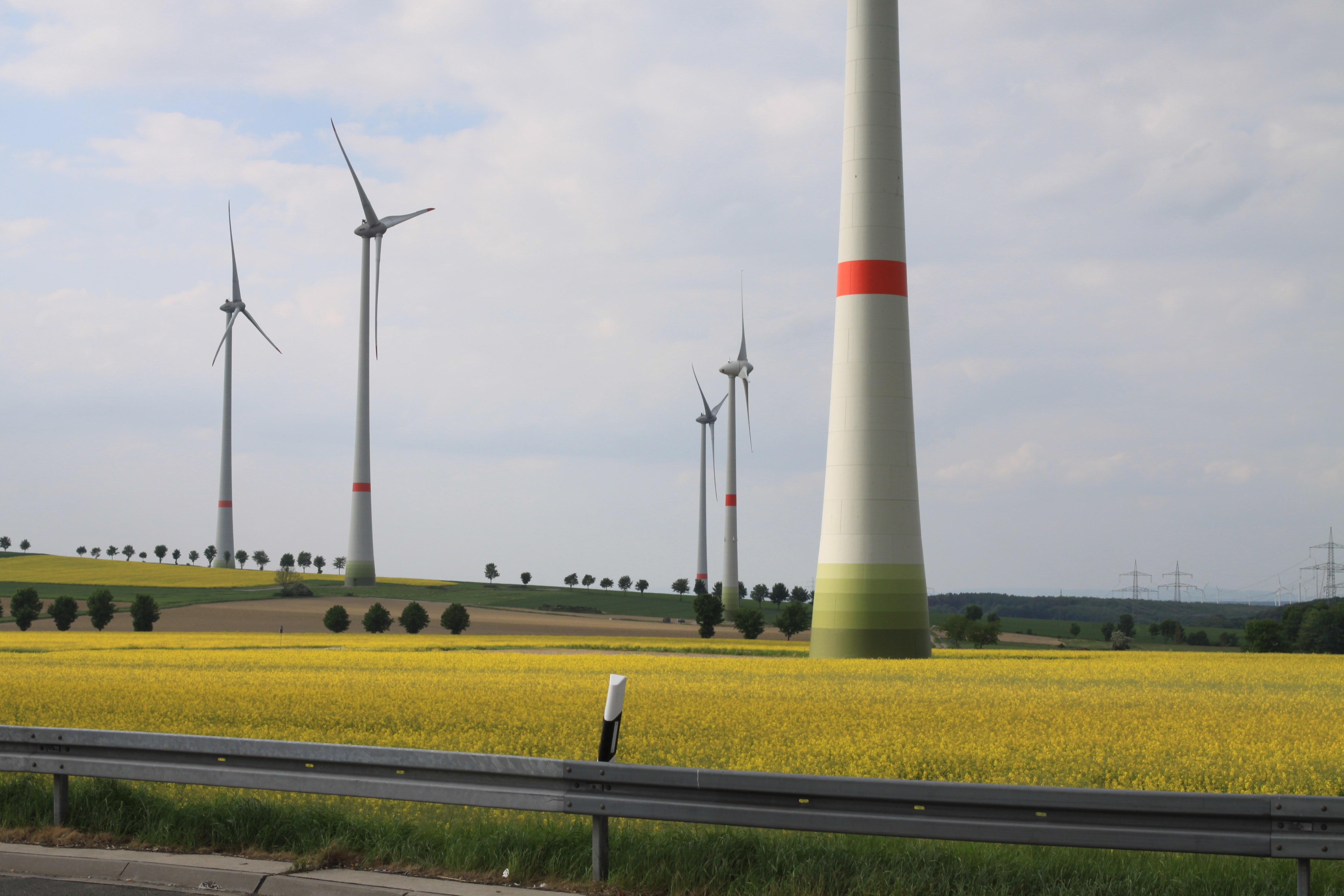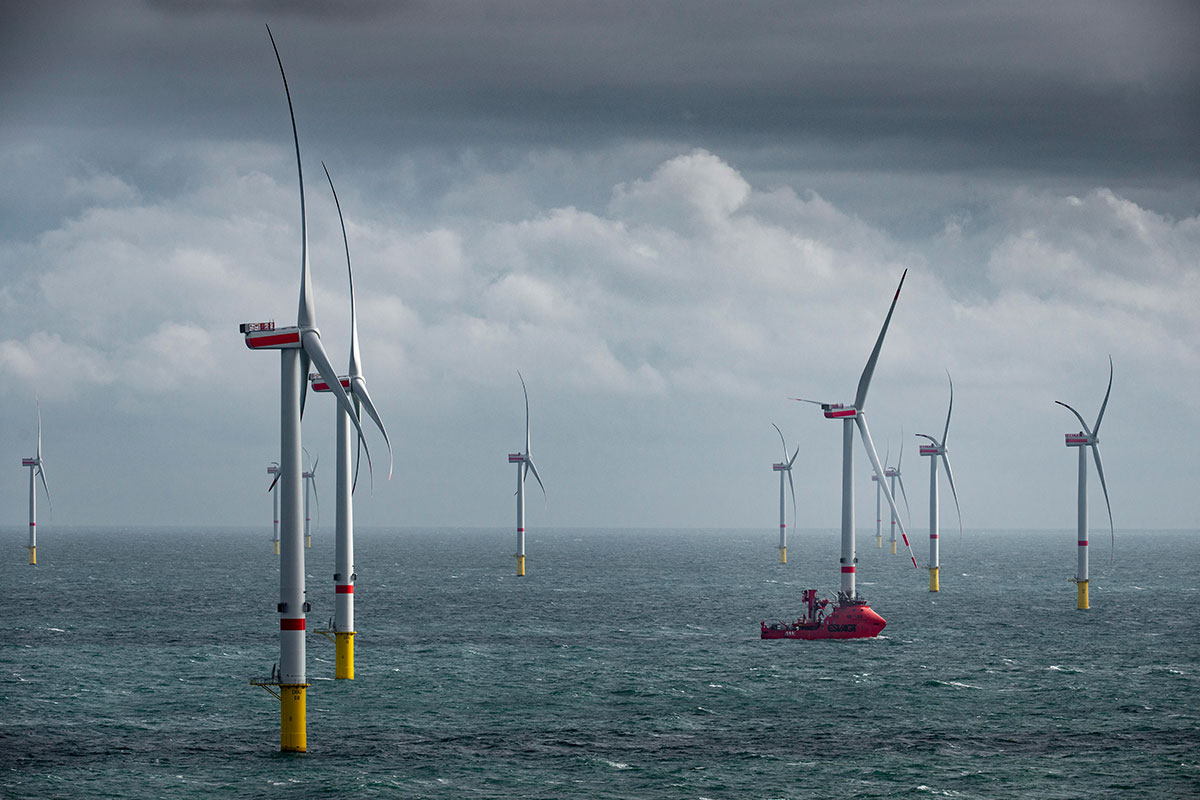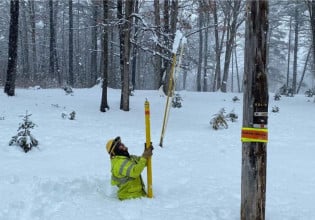GE Opens R&D Facility for 3D Printing Massive Wind Turbine Tower Bases
Using a 3D printer the size of a three-story building, GE will look to develop bases capable of supporting onshore turbines twice the height of the Statue of Liberty.
To capture the energy of the strong, unencumbered winds found at higher altitudes, wind turbines have to be tall. Seriously tall. At 90 meters (295 feet), the average wind turbine in 2020 could stretch to a little over half way up the Washington monument, the tallest obelisk in the world.
In the realm of wind, though, bigger is always better. The higher the tower climbs, the stronger the winds and the more energy its blades can generate.
That is, if you can get it to the farm in the first place — today’s onshore towers are limited in diameter to 4.5 meters, lest they barrel into bridges or highway overpasses while in transit on the backs of trucks.

Today's onshore towers are limited in diameter to 4.5 meters. Image used courtesy of jef van hoof/Unsplash
But GE Renewable Energy has a solution. Rather than build the towers’ bases remotely before transporting them to a farm, the company is developing a 3D printing system capable of constructing them on site.
And on April 21, it inaugurated the opening of its new research and development facility in Bergen, New York, where it will optimize that system to craft bases up to 20 meters tall.
The Bergen Facility
GE’s new R&D center is an outgrowth of its multi-year collaboration with LafargeHolcim, a multinational manufacturer of building materials, and the 3D printing construction company COBOD. Though officially announced in June 2020, the companies originally came together in 2019 to print their first prototype tower in Copenhagen, Denmark.
There, with GE supplying the design expertise, LafargeHolcim the “tailor-made” concrete, and COBOD the crane-supported 3D printer, the companies successfully crafted a 10-meter tall, woven tower pedestal.
The companies crafted their first prototype in Copenhagen in 2019. Video used courtesy of COBOD
Now, in anticipation of field application within the next five years, a full-time team of 20 will work at the facility in Bergen, roughly 20 minutes outside of Rochester, to further those technologies. Among them is a gargantuan printer the size of a three-story building, which COBOD’s founder and general manager, Henrik Lund-Nielsen, says is the largest in the world.
“The printer we have delivered is second to none: not only can it print in excess of 10 tons of real concrete per hour, but in addition, it is the first 3D concrete printer in the world with two X-axes on the printer,” Lund-Nielsen said. “The printer can better be described as a multifunctional construction robot than a printer.”
And the bases it’s designed to construct may eventually support towers the size of skyscrapers.
Onshore Towers Dwarfed by Their Offshore Cousins
Though the height of onshore wind turbines has increased 59% since 1999, when the average turbine topped out at just below 60 meters (197 feet), even the largest land-based towers today pale in comparison to the height of offshore installations.
GE’s prototype Haliade-X, for instance, will support blades reaching up to 260 meters, making it just a few hundred feet shorter than New York’s Chrysler Building. China’s MingYang Smart Energy has announced plans to build a 264-meter turbine of its own, in line with similar targets from Siemens Gamesa Renewable Energy and the Danish manufacturer Vestas.

Onshore turbines are dwarfed by their offshore cousins. Image used courtesy of WindEurope
And that height, of course, translates to power. The Haliade-X can generate up to 14 MW of electricity, good for 74 gigawatt hours (GWh) of gross production per year, on its own. To hit similar production on land, with turbines running at the average namesake capacity in 2020, it’d take five.
Leveling the Field
Development at the Bergen site could change the dynamic entirely. Per GE’s original release detailing its collaboration with LafargeHalcim and COBOD, were developers able to produce larger bases on site, they could feasibly construct onshore turbines 150-200 meters (492-656 feet) tall, close in height to their offshore cousins.
.jpg)
Development at GE's 3D printing facility could lead to far taller onshore towers. Image used courtesy of GE Renewable Energy
That, in turn, could lead to a power boost on the order of 30%; Whereas a 5 MW turbine at 80 meters generates 15.1 GWh of electricity per year, the company noted, the same turbine at 160 meters would generate 20.2 GWh.
The result may be far more days like March 29, 2022. On that date late last month, wind turbines in the U.S. generated more energy than both nuclear and coal-powered plants, for the first time.






